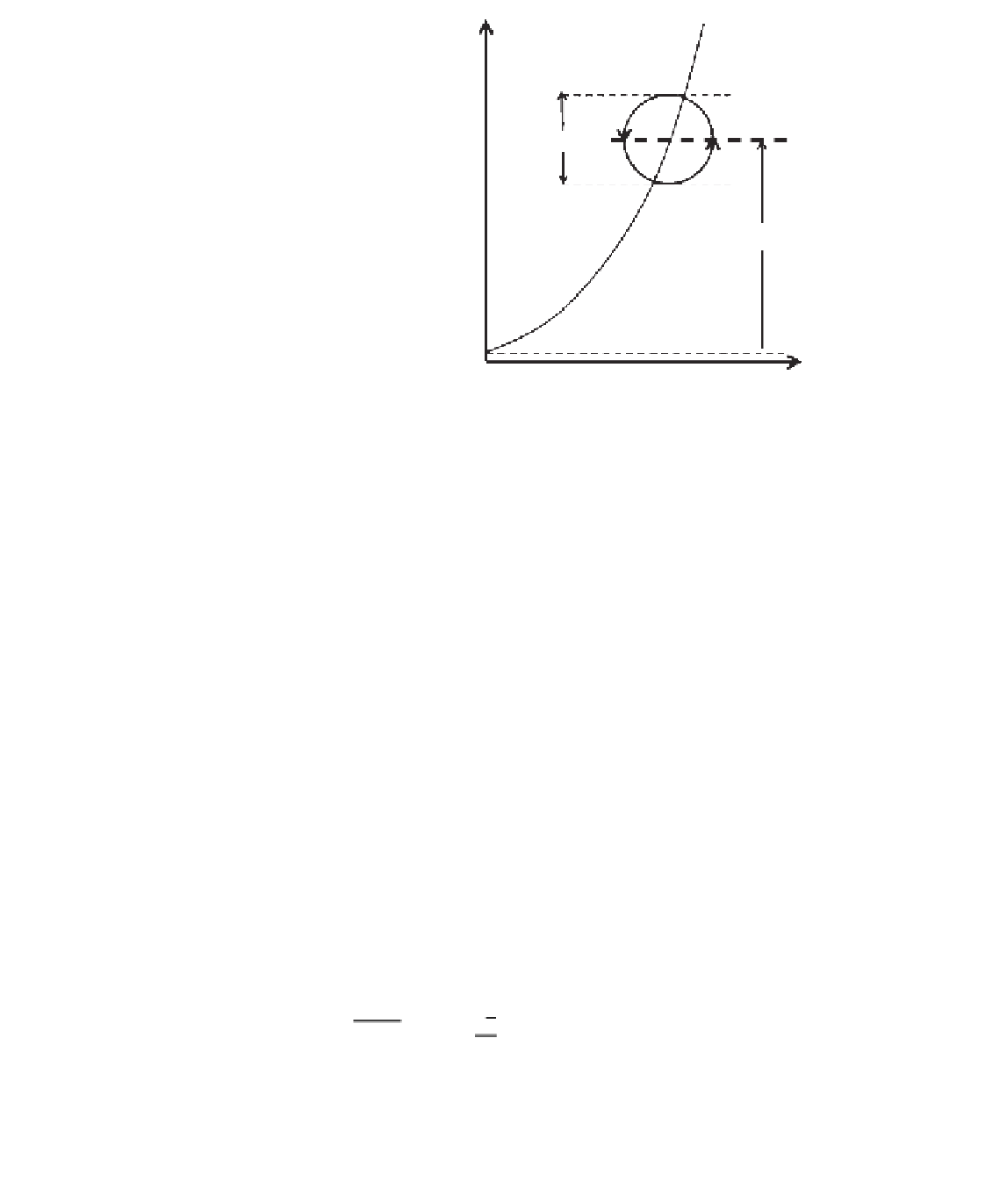Geoscience Reference
In-Depth Information
I=kz
z
Figure 19.5
Effective eddy
size or
mixing length
for
turbulence in the surface
layer of the ABL assumed
proportional to height above
the effective sink for
momentum.
0
Mean wind speed
Observations in the surface layer suggest that the effective average eddy size of
the turbulent eddies is influenced by proximity to the surface. In mixing length
theory, it is assumed that, in neutral conditions in the surface layer over an
aerodynamically rough surface where the roughness elements covering the surface
are quite short (e.g., grass), the mixing length is directly proportion to the height,
z
, above the level of the effective sink of momentum within the roughness elements,
see Fig. 19.5, i.e. that:
(19.16)
2
2 2
kz
l
=
where
k
is an, at this stage, undefined constant.
Hence the eddy diffusivities
K
M
and
K
V
, (and because the same physical mecha-
nism is assumed to drive the turbulent kinematic flux of sensible heat, also
K
H
) can
be re-written as:
⎛⎞
∂
u
22
.
(19.17)
KKKk z
===
⎜⎟
∂
⎝⎠
M
V
H
(Note that in neutral conditions the value of
K
H
derived from mixing length
theory is not important because (assuming K Theory does apply) there can be
no transfer of sensible heat because the gradient of virtual potential temperature
is zero.)
Focusing next on momentum transfer, substituting Equation (19.17) into
Equation (19.4) in neutral conditions gives:
2
⎛⎞
22
u
∂
(
)
(19.18)
uw
¢¢
=−
kz
⎜⎟
∂
⎝⎠





